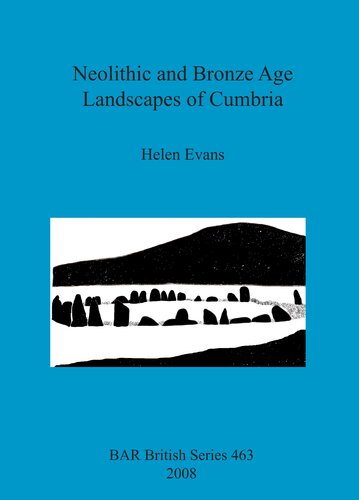

Most ebook files are in PDF format, so you can easily read them using various software such as Foxit Reader or directly on the Google Chrome browser.
Some ebook files are released by publishers in other formats such as .awz, .mobi, .epub, .fb2, etc. You may need to install specific software to read these formats on mobile/PC, such as Calibre.
Please read the tutorial at this link: https://ebookbell.com/faq
We offer FREE conversion to the popular formats you request; however, this may take some time. Therefore, right after payment, please email us, and we will try to provide the service as quickly as possible.
For some exceptional file formats or broken links (if any), please refrain from opening any disputes. Instead, email us first, and we will try to assist within a maximum of 6 hours.
EbookBell Team

4.8
24 reviewsIn 1933, R. G. Collingwood forwarded a four-headed approach for the advancement of knowledge of Cumbrian prehistory; office work, fieldwork, excavation and publication. The office work included three main tasks. The first task, the cataloguing and classification of sites and finds. This present study draws on Collingwood's ideas in a number of ways, not least in that in order to interpret Cumbria's prehistoric record at a regional scale, it has been necessary to analyse and interpret many disparate strands of evidence. Only through setting out and discussing previously available evidence and adding to it through new fieldwork and excavation is it possible to construct, then forward an holistic and integrated regional sequence in line with contemporary academic schema. The analyses undertaken for this study have included the examination of environmental data, the collection and characterisation of lithic scatters, interpretation of the distributions, settings and architecture of monuments and the analysis of burial and depositional practices. Chapter one provides an introduction to Cumbrian landscapes and demonstrates the need for a regional approach towards the county's prehistoric record. Drawing on the use of theoretically informed landscape perspectives in the interpretation of prehistoric occupation, chapter two sets out the methodological and interpretative frameworks forming the basis of this study. Chapter three outlines the character and distribution of environmental and lithic data and develops a model of the likely nature of land use and occupation these represent. Chapter four introduces the monument record and outlines methodological approaches to particular monument types. Chapter five discusses the classification and interpretation of stone circles and chapter six interprets the character and distribution of all Neolithic and Early Bronze Age monuments. Analysis of the landscape settings of monuments (chapter seven) and evidence for burial and deposition (chapter eight) illustrate the social and geographical scales at which communities operated over the Neolithic and Bronze Age and how they drew on and appropriated aspects of the natural world. Demonstrating the articulation of themes discussed in earlier chapters, chapter nine takes the form of an integrated case study of occupation, monument use and depositional practice across the Furness Peninsula. The final chapter discusses the nature and identification of regional traditions, forwards an integrated regional narrative and concludes with suggestions for further work.